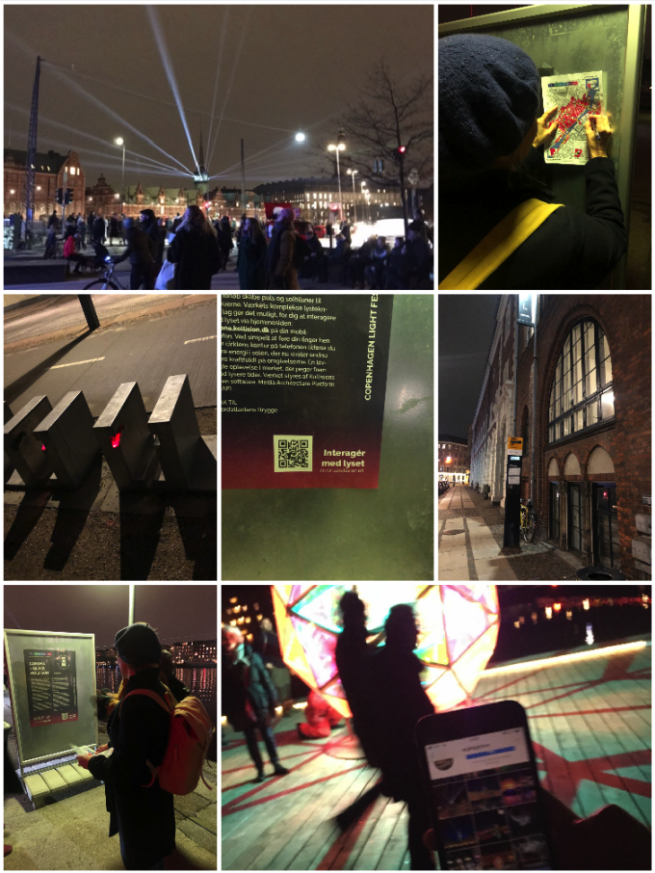A DataWalk to explore DataPublics

On Tuesday evening, the members of the DataPublic team ventured out on an Alison Powell inspired DataWalk in the streets of Copenhagen, which were currently inhabited by multiple light installations as part of the Copenhagen Light Festival. With an assigned navigator, photographer, note taker and map maker, the team set of to explore the datafication of the public spaces in central Copenhagen, but also inspired by the work on the 'politics of things' by Wendy Willems, the aim was to explore the ways in which public spaces or physical objects are remediated into online public spaces.
The DataWalk offered a concrete method to explore some of the questions that are central to the work in the group, namely processes of datafication, but also the online/offline divide, where publics are often considered as either or. While the light festival is not a political event made for the mobilisation of publics, it was still illustrative to how the installations moved from the physical environment into digital environments such as Instagram. Here the light installations were attributed with additional messages, which for example related to the current Covid-19 situation and the movement of ‘get outside’, ‘home tourism’ and ‘share your city’, remediating and politicising the event in new ways.
“It is an interesting method to as a team reflect based on very concrete observations, which also allowed us to discuss some of the questions we have been theoretically attempting to grasp in our work. In these Covid-19 times, it was also a great way to be able to interact both professionally but also in a more social manner with colleagues outside the digital realm of Teams and Zoom – something that was very welcome as a new member in the team,” says latest member of the DataPublics Team, Lisa Merete Kristensen.
Data free or invisible data flows?
One of the questions that also arose during the night came as a result of how some parts of the city seemed to be ‘black spots’, where no obvious data flows where evident through for example monitors. However, this led to a discussion of the invisibility of datafication processes, because experimenting with a mobile phone might illustrate how ‘connected’ the site actually was and how eating opportunities or social events in the area were probably all in some way interlaced into these data infrastructures of the different social media and search platforms.
This related well with one of the larger questions of the research groups, namely how to explore a phenomenon, which is not a very delineated object, but rather can be seen as an all-encompassing infiltrator that functions across multiple settings and practices, which take place both on- and offline. This question is essential for how to both conceptualise and methodologically approach the study of DataPublics, which is the goal of the project – a goal that has already begun to take form and at the coming ICA2021 conference in May the group are also participating with a paper that centres on these questions and presents a research agenda for the study of DataPublics.